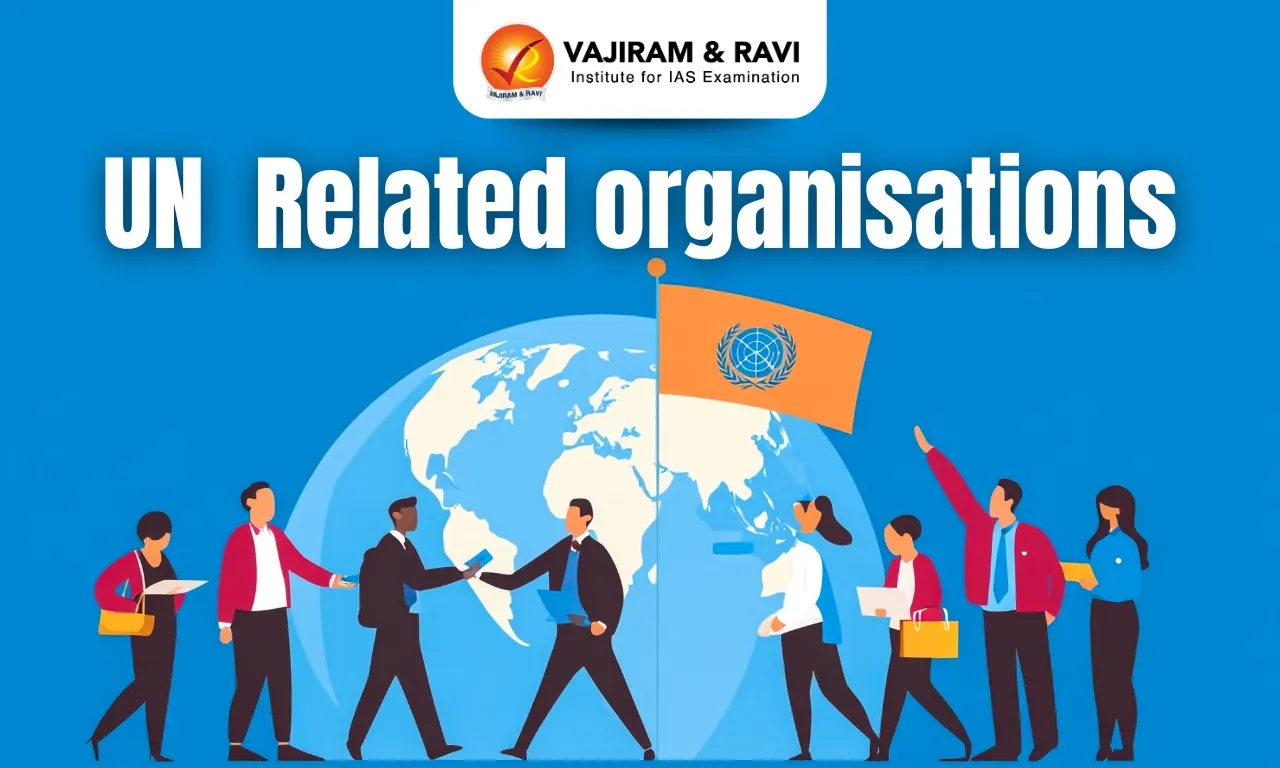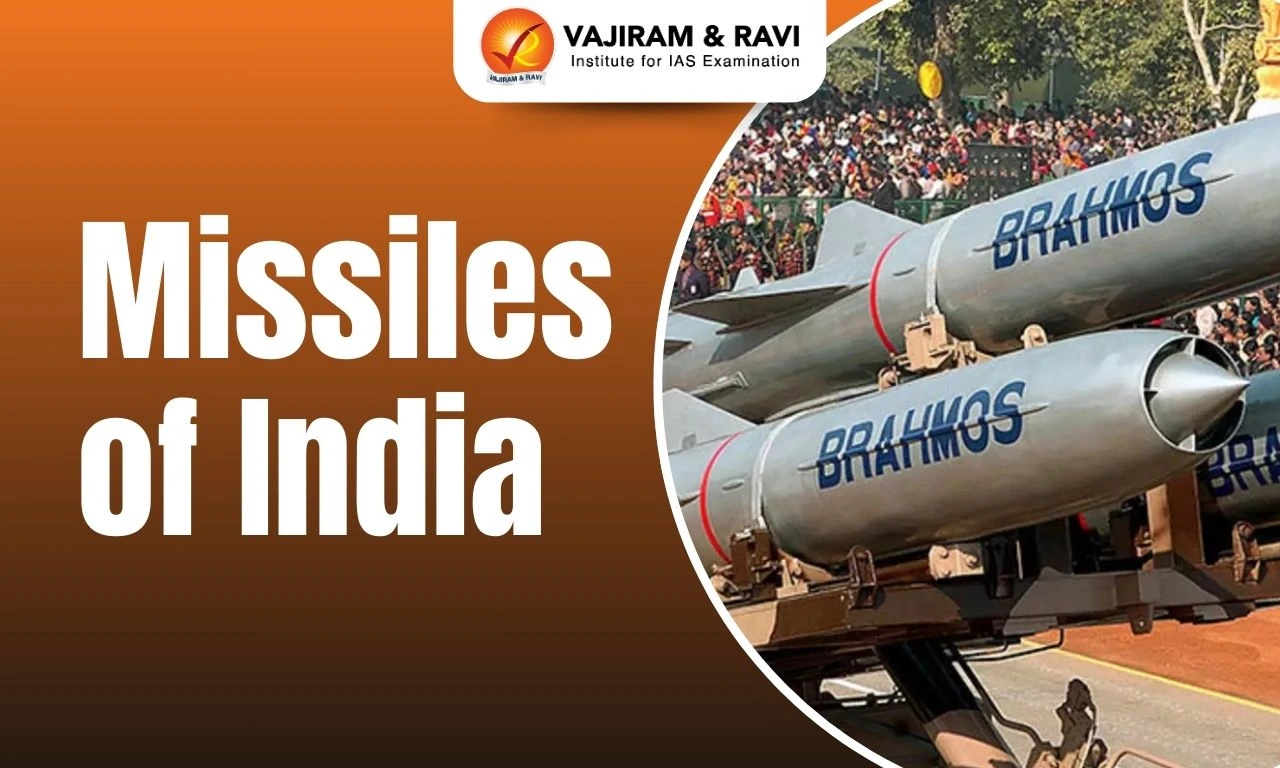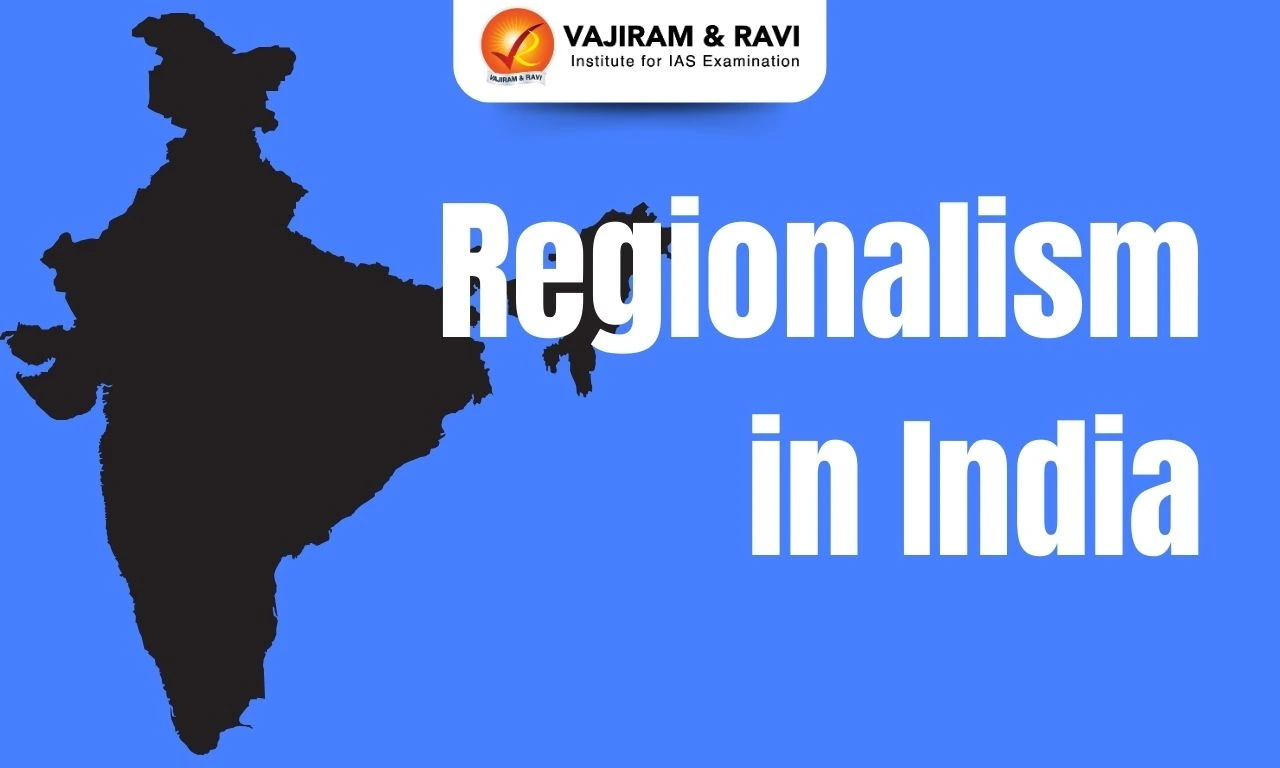What are the related organisations and other entities and bodies of the United Nations?
The organisational structure of the United Nations (UN) consists of principal organs, specialised agencies, funds and programmes, related organisations, and other entities and bodies.
- Related organisations: The UN has established cooperation agreements with a number of intergovernmental organisations that work towards common goals and objectives. These organisations are called “Related organisations” by the UN. However, they are not considered a part of the UN system but maintain a working relationship with the UN.
- Other entities and bodies of the United Nations (UN): These entities are related to other purposes such as human rights, relief work etc.
| Related organisations | Other entities and bodies |
|
|
UN – Related organisations:
International organisation for Migration
- Objective: International organisation for Migration (IOM) works to help ensure the humane management of migration, to promote international cooperation on migration issues and to assist in the search for practical solutions to migration problems.
- Foundation: Established in 1951as the Intergovernmental Committee for European Migration (ICEM) to help resettle people displaced by World War II. It became a United Nations agency in 2016.
- Areas of works:
- Migration and development
- Facilitating migration
- Regulating migration
- Addressing forced migration
- Headquarters: Geneva, Switzerland
World Trade organisation
- Objective: The World Trade Organisation (WTO) is a forum for governments to negotiate trade agreements and a place where member governments try to sort out the trade problems they face with each other.
- Foundation: commenced operations on 1 January 1995, pursuant to the 1994 Marrakesh Agreement, thus replacing the General Agreement on Tariffs and Trade (GATT) that had been established in 1948.
- Headquarters: Geneva, Switzerland
International Atomic Energy Agency
- Objective: The International Atomic Energy Agency (IAEA) is the world’s centre for cooperation in the nuclear field. It works with member states and multiple partners worldwide to promote the safe, secure and peaceful use of nuclear technologies.
- Foundation: Created in 1957 in response to the deep fears and expectations generated by the discoveries and diverse uses of nuclear technology.
- Three main missions of IAEA:
- Promoting the peaceful uses of nuclear energy by its member states,
- Implementing safeguards to verify that nuclear energy is not used for military purposes, and
- Promoting high standards for nuclear safety.
- Awarded the Nobel Peace Prize: In 2005, the IAEA were awarded the Nobel Peace Prize for the efforts to prevent nuclear energy from being used for military purposes.
- IAEA Safeguards: These are activities by which the IAEA can verify that a State is living up to its international commitment not to use nuclear programmes for nuclear weapons purposes.
- Additional Protocol: significantly increases the IAEA’s ability to verify the peaceful use of all nuclear material in States with comprehensive safeguards agreements. The implication of ratifying the ‘Additional Protocol’ of IAEA means that civilian nuclear reactors come under IAEA safeguards.
- Work with UNSC: Unlike most other specialized international agencies, the IAEA does much of its work with the Security Council and not with the United Nations Economic and Social Council.
- Headquarters: Vienna, Austria
Organisation for the Prohibition of Chemical Weapons
- Objective: Organisation for the Prohibition of Chemical Weapons (OPCW) works to eliminate chemical weapons stockpiles, to ensure the nonproliferation of existing stockpiles, to assist states in protecting themselves against chemical weapons attacks, and to promote international cooperation in the use of chemistry for peaceful purposes.
- Foundation: OPCW is the implementing body of the Chemical Weapons Convention (CWC), which entered into force in 1997. The OPCW Member States work together to achieve a world free of chemical weapons.
- Awarded Nobel Peace Prize: The organisation was awarded the Nobel Peace Prize in 2013 for its extensive efforts to eliminate chemical weapons.
- Headquarters: The Hague, Netherlands
United Nations Framework Convention on Climate Change Secretariat
- Objective: The UNFCCC secretariat (UN Climate Change) is the United Nations entity tasked with supporting the global response to the threat of climate change.
- Foundation: The UNFCCC Secretariat (UN Climate Change) was established in 1992 when countries adopted the United Nations Framework Convention on Climate Change (UNFCCC).
- Registry for Nationally Determined Contributions (NDC): also maintains the registry for NDC established under the Paris Agreement, a key aspect of the implementation of the Paris Agreement.
- Sessions: The secretariat organizes and supports between two and four negotiating sessions each year. The largest and most important is the Conference of the Parties, held annually and hosted in different locations around the globe.
- Marrakech Partnership for Global Climate Action: Supported by the secretariat and agreed by governments to signal that successful climate action requires strong support from a wide range of actors, including regions, cities, businesses, investors and all parts of civil society.
- Headquarters: Bonn, Germany
International Criminal Court
- Objective: International Criminal Court (ICC) investigates and, where warranted, tries individuals charged with the gravest crimes of concern to the international community such as genocide, war crimes, crimes against humanity and the crime of aggression.
- Foundation: The ICC was established by the Rome Statute of the International Criminal Court in 1998, and its sittings started on July 1, 2002.
- Jurisdiction: The Court may exercise jurisdiction in a situation where genocide, crimes against humanity or war crimes were committed on or after 1 July 2002 and:
- The crimes were committed by a State Party national or in the territory of a State Party, or in a State that has accepted the jurisdiction of the Court, or
- The crimes were referred to the ICC Prosecutor by the United Nations Security Council (UNSC) pursuant to a resolution adopted under chapter VII of the UN charter.
- Headquarters: The Hague, Netherlands
Preparatory Commission for the Comprehensive Nuclear-Test-Ban Treaty organisation
- Objective: The Preparatory Commission for the Comprehensive Nuclear-Test-Ban Treaty Organisation (CTBTO) promotes the Comprehensive Nuclear-Test-Ban Treaty (which is not yet in force) and the build-up of the verification regime so that it is operational when the Treaty enters into force.
- Foundation: The organisation was established by the States Signatories to the Comprehensive Nuclear-Test-Ban Treaty (CTBT) in 1996.
- The main purpose is to:
- Promote the entry into force of the CTBT.
- Establish a global verification regime in preparation for the Treaty’s entry into force.
- Interim organisation: CTBTO Preparatory Commission is an interim organisation, and it will be dissolved once the CTBT enters into force and will be replaced by the CTBTO.
- Status of India:India is not a member of the Comprehensive Nuclear Test Ban Treaty.
- Headquarters: Vienna, Austria
International Trade Centre
- Objective: only development agency that is fully dedicated to supporting the internationalization of small and medium-sized enterprises (SMEs).
- Foundation: established on 1 January 1968 with a joint mandate with the WTO and UN through the United Nations Conference on Trade and Development (UNCTAD).
- Headquarters: Geneva, Switzerland
UN – Other Entities and Bodies:
United Nations Programme on HIV/AIDS
- Objective: The United Nations Programme on HIV/AIDS (UNAIDS) leads and inspires the world to achieve its shared vision of zero new HIV infections, zero discrimination and zero AIDS-related deaths.
- Foundation: The Joint United Nations Programme on HIV/AIDS (UNAIDS) was launched in 1996 to strengthen the way in which the UN was responding to AIDS.
- GIPA principle: The agency promotes the GIPA principle (greater involvement of people living with HIV) formulated in 1994 and endorsed by the United Nations in 2001 and 2006.
- Headquarters: Geneva, Switzerland
United Nations High Commissioner for Refugees
- Objective: The United Nations High Commissioner for Refugees (UNHCR) protects refugees worldwide and facilitates their return home or resettlement.
- Foundation: UNHCR was created in 1950 to address the refugee crisis that resulted from World War II. The 1951 Refugee Convention established the scope and legal framework of the agency’s work.
- Awarded Nobel Peace Prizes in 1954 and 1981.
- Started Nansen Refugee Award in 1954 for recognition of outstanding service to the cause of refugees, displaced or stateless people.
- Headquarters: Geneva, Switzerland
United Nations Institute for Disarmament Research
- Objective: voluntarily funded autonomous institute within the United Nations, which generates ideas and promotes action on disarmament and security.
- Foundation: established in 1980 by the United Nations General Assembly
- Headquarters: Geneva, Switzerland
UN WOMEN
- Objective: UN Women merges and builds on the important work of four previously distinct parts of the UN system, which focus exclusively on gender equality and women’s empowerment.
- Foundation: In July 2010, the United Nations General Assembly created UN Women, the United Nations Entity for Gender Equality and the Empowerment of Women.
- Headquarters: New York City, USA.
Last updated on April, 2025
→ UPSC Notification 2025 was released on 22nd January 2025.
→ UPSC Calendar 2026 is released on 15th May, 2025.
→ The UPSC Vacancy 2025 were released 1129, out of which 979 were for UPSC CSE and remaining 150 are for UPSC IFoS.
→ UPSC Admit Card 2025 is released now for CSE Prelims Exam 2025.
→ The UPSC Prelims 2025 is scheduled to be conducted on 25th May 2025 and UPSC Mains 2025 will be conducted on 22nd August 2025.
→ Apply once through it and aspirants can apply for various government exams conducted by UPSC.
→ The UPSC Selection Process is of 3 stages-Prelims, Mains and Interview.
→ UPSC Result 2024 is released with latest UPSC Marksheet 2024. Check Now!
→ UPSC Toppers List 2024 is released now. Shakti Dubey is UPSC AIR 1 2024 Topper.
→ Also check Best IAS Coaching in Delhi
UN organisations FAQs
Q1. What is the difference between the International Court of Justice (ICJ) and the International Criminal Court (ICC)?+
Q2. Is India a member of the 1951 Refugees Convention?+
Tags: quest un organisations

















